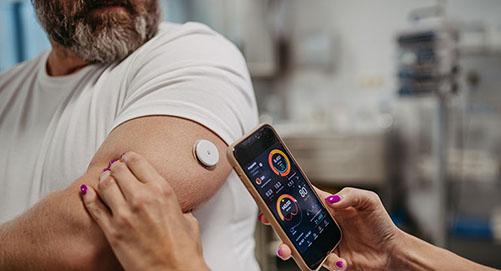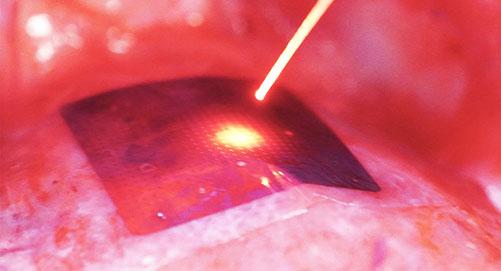- What are medical devices?
- What are the benefits of medical devices and how are they being used?
- What are NIBIB-funded researchers developing in the area of medical devices to improve medical care?
What are medical devices?
Medical devices are technologies that interact with the human body to improve patient health. These technologies can monitor, modulate, and supplement bodily functions and anatomical structures. Medical devices can function inside the body such as implanted pacemakers or outside the body such as wearable sensors.
What are the benefits of medical devices and how are they being used?
-
Treating illnesses through electrical stimulation. Stimulators are small, implanted devices with electrodes that send electrical pulses to specific organs to stimulate or regulate their functions. For example, pacemakers are devices implanted into the heart that send electrical pulses to normalize the heartbeat and rhythm. Another example is neurostimulators, which can be implanted along the spinal cord to treat chronic pain or implanted in the brain (known as deep brain stimulation) to treat epilepsy and movement disorders such as Parkinson’s disease.
-
Monitoring vital health signs and a range of medical conditions.
Media Image
Wearable devices use sensors to monitor vital signs such as blood pressure and heart rate and manage diseases such as diabetes. For example, continuous glucose monitors help people with diabetes manage their blood sugar (glucose) levels. The monitor’s sensor, located in a wearable patch, detects glucose levels. When glucose levels drop too low, the sensor sends a signal to another wearable device—an insulin pump—that automatically adjusts the dose of insulin delivery. Some wearable devices may also be equipped with a transmitter and a software program that enables data sharing with patients’ health care providers.
-
Providing assistance to people with disabilities. Assistive medical devices help people with disabilities to live independently. These devices include wheelchairs, walking canes, and braces, as well as artificial limbs or prostheses to replace a missing limb, which may have been lost due to trauma, disease, or congenital condition. Another example of an assistive device is hearing aids designed to enhance hearing in people with partial or complete hearing loss.
What are NIBIB-funded researchers developing in the area of medical devices to improve medical care?
Wireless, light-powered pacemaker shines bright in animal study

While pacemakers have been instrumental in treating many patients with heart rhythm disorders, their usefulness has been limited by a bulky design, dependence on wires, and the risk of heart damage or infection after surgical implantation. Researchers at the University of Chicago have developed a lightweight, flexible silicon membrane that conforms to the surface of the heart, delivering electrical currents when and where beams of light strike the device. The system could someday provide a high degree of control over irregular heart activity while placing less risk and burden on patients than traditional pacemakers.
Wearable lung patch uses deep learning to detect asthma and COPD
Wheezing, a high-pitched whistling sound, is a common indicator of chronic respiratory diseases, including asthma and chronic obstructive pulmonary disease (COPD), due to inflammation and swelling of the airways. Both diseases are underdiagnosed and more than half of diagnosed cases are not adequately controlled, resulting in frequent and intense episodes that can lead to increased emergency department visits and missed school days and workdays.
Although digital stethoscopes are more advanced than traditional ones, they pick up airborne noise, which interferes with wheeze detection.

Researchers at the Georgia Institute of Technology have developed a solution that could enable physicians to intervene earlier. They paired a deep learning model with a wearable patch equipped with a highly sensitive sensor that can automatically detect wheezing sounds. The deep learning model has the potential to classify respiratory diseases, which could speed up their diagnosis and treatment. The results of their pilot patient study showed the new method increased the accuracy of wheeze detection.
Updated October 2024
